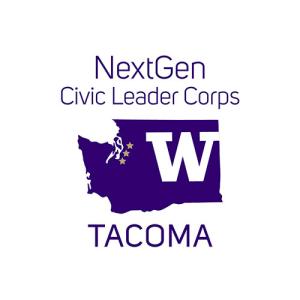Exploring Tacoma's last historic frontier: South Tacoma Way
A project that began in a UW Tacoma classroom reveals the lively, but largely forgotten, stories of some of Tacoma’s oldest buildings in one of the city’s oldest neighborhoods.
The recently published booklet, Historic South Tacoma Way, tells the history of 15 buildings and several prominent individuals in the South Tacoma Business District.
The project was the result of a partnership between UW Tacoma, the South Tacoma Business District Association, the South Tacoma Neighborhood Council, and Historic Tacoma, a grassroots organization dedicated to preserving Tacoma’s architectural legacy.
It all started with Caroline Swope’s fall 2009 “Introduction to Public History” course at UW Tacoma. Swope is a part-time lecturer at the University, board president of Historic Tacoma and an architectural historian whose business is Kingstree Studios.
Definitions of “public history” vary, but generally focus on the interactive presentation of history to a general audience. The field emphasizes the importance of educating the public on history — a key goal in the Historic South Tacoma Way project.
A proud history of trains, families and retailers
South Tacoma is one of Tacoma’s last commercial districts with a significant number of original buildings still intact. Yet, except for older residents who grew up in the neighborhood, few people know about South Tacoma’s history, said Pete Bristow, who was president of the business district association during the project.
In the 1890s, South Tacoma was a railway center, full of train shops, sheds and plants that at one point handled all of Northern Pacific Railway’s repairs west of the Mississippi. The rail work gave birth to the South Tacoma Business District as companies sprang up to serve the laborers and their families, according to the booklet.
In the 2009 class, Swope assigned students to research specific buildings, their owners and prominent individuals in three Tacoma business districts: the South Tacoma Business District, the Sixth Avenue Business District and the Hilltop Business District. Students spent about half of the class in the Tacoma Public Library’s Northwest Room, searching through vintage newspapers, photo collections, city directories and other historical sources.
Working in groups, students assembled a mock booklet for a historic walking tour of their assigned district, complete with photos and half-page descriptions of the buildings and neighborhood.
Students as primary researchers
“Ultimately, anyone who does public history spends a lot of time on community research because there’s not going to be a book on your neighborhood or whatever it is you’re researching most of the time,” Swope said.
“The whole point of public history is that you’re the first person doing it. ... You’re the first person digging around in the trenches to figure out what happened here, when it happened and who was involved.”
Students learned the joys and realities of searching for historical data — that hours in the library might result in a two-sentence fact or nothing at all.
“I wanted them to get a really good sense that every community has a story, and what it takes to get that story out there,” Swope said.
She told students it was possible their work could someday be the basis for publication. Timing and funding fell into place last spring, when Swope and Historic Tacoma asked the South Tacoma Business District Association if it wanted to support production of a booklet based on the class’s South Tacoma Way research.
A new commuter rail station is slated to open in the district next year and business owners were interested in pursuing city loans and grants to improve their storefront facades.
Two student interns — one a senior and the other a graduate student — fact-checked the earlier students’ work. Swope wrote the text, including architectural descriptions of the buildings. A professional graphic artist designed the 14-page black-and-white publication, which brims with historic photos.
Developing a fondness for buildings
When the booklets were published last summer, the business district and Historic Tacoma sponsored a walking tour of the district.
“We feel the project turned out really well,” said Pete Bristow, owner of Bristow’s Exclusive Auto Repair in the district.
Swope also sent the booklets to students who worked on the South Tacoma Way project. The students, many of them now graduated, were elated to see their work published, she said.
“Students get very fond of the buildings. I’ve had students come up to me and say, ‘I drove past my building the other day.’ Sometimes you feel like you’re the only person in the world who knows this interesting tidbit about this building just sitting there,” Swope said.
“It was really great to be able to take this product and say, ‘This is what happens with public history.’ ”
The booklet "Historic South Tacoma Way" is available below, or as a PDF download.
Students who participated in the research for Historic South Tacoma Way include: Shurvon Haynes, Scott Neff, Sean Panzer, Kirk Redal, Brian Rybolt, Darren Takagi, Brittney Thomas and intern Tamara LaFountain. Lauren Perez Hoogkamer, a graduate student at Columbia University in New York City, served as summer project manager.



